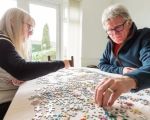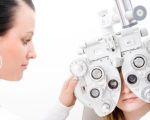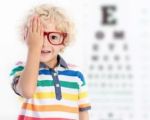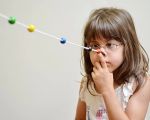- 1-Understanding-Eye-Focusing-Challenges-in-Children
- 2-Vision-Therapy-as-an-Effective-Approach
- 3-Practical-Exercises-to-Enhance-Eye-Focusing-Speed
- 4-Monitoring-Progress-and-Personalized-Care
- 5-Real-Life-Cases-and-Professional-Insights
1. Understanding Eye Focusing Challenges in Children with Learning Disabilities
Children with learning disabilities often experience difficulties with eye focusing speed, which can affect their ability to read, write, and process visual information efficiently. Eye focusing speed refers to how quickly the eyes can adjust focus from one object to another, an essential skill for academic tasks and everyday activities.
This challenge can stem from underlying vision disorders or neurological processing issues, making it harder for these children to keep up with classroom demands. Recognizing these struggles early is critical to providing the right support and intervention.
1.1 Impact on Learning and Daily Functioning
Poor eye focusing speed can lead to symptoms like eye strain, headaches, and difficulty concentrating. For children with learning disabilities, these issues may compound existing challenges, making learning frustrating and discouraging.
2. Vision Therapy as an Effective Approach to Improving Eye Focusing Speed
Vision therapy is a specialized program of eye exercises and activities designed to improve visual skills, including eye focusing speed. Unlike traditional corrective lenses, vision therapy targets the neurological mechanisms controlling eye movements and focus, retraining the brain and eyes to work better together.
2.1 Components of Vision Therapy for Eye Focusing
Key elements include accommodative exercises that enhance the eyes’ ability to change focus quickly, vergence training to improve coordination between both eyes, and eye tracking drills. These exercises are often customized to each child’s unique needs.
2.2 Role of Professionals in Vision Therapy
Certified vision therapists and optometrists work closely with children and their families, ensuring exercises are done correctly and adjusting programs based on progress. This professional guidance increases the effectiveness of the therapy.
3. Practical Exercises to Enhance Eye Focusing Speed at Home and School
Several engaging exercises can support improvements in eye focusing speed alongside professional therapy. Incorporating these into daily routines encourages consistent practice and faster results.
3.1 Pencil Push-Ups and Focus Shifting
This simple exercise involves moving a pencil slowly toward the nose while keeping the eyes focused on it. It trains the eyes to adjust focus dynamically and strengthens accommodative ability.
3.2 Tracking Moving Objects
Using a small ball or light to follow with the eyes improves both tracking and focusing skills. This can be made fun and interactive to keep children motivated.
3.3 Computerized Vision Therapy Tools
Modern vision therapy often integrates software-based activities that provide instant feedback, allowing children to engage with their therapy in an interactive and gamified way, enhancing adherence.
4. Monitoring Progress and Personalized Care for Sustained Improvement
Improving eye focusing speed is a gradual process that requires consistent monitoring and adjustments. Regular assessments help identify improvements or areas needing more focus.
4.1 Tailoring Therapy to Individual Needs
No two children are alike; therapy plans should reflect each child’s vision profile, learning style, and response to exercises. Personalization increases success rates and helps maintain motivation.
4.2 Collaboration Between Parents, Teachers, and Therapists
Ongoing communication among caregivers and educators ensures the child receives consistent support across environments, which is vital for reinforcing gains made in vision therapy sessions.
5. Real-Life Cases and Professional Insights Enhancing Trust and Understanding
Consider the example of Liam, a 9-year-old with dyslexia who struggled with reading fluency due to slow eye focusing. After six months of targeted vision therapy combined with home exercises, Liam’s focusing speed improved dramatically, which reflected positively on his reading confidence and academic performance.
Eye care professionals stress that while vision therapy is not a cure-all, it plays a significant role in addressing visual challenges associated with learning disabilities. For parents seeking tailored solutions and expert support, Eye Docs offers specialized services and products designed to support children’s visual development effectively.








